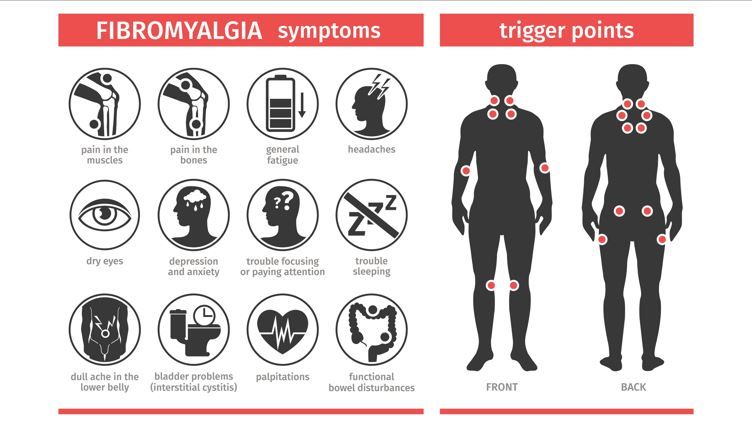Article
Source of Pain in Fibromyalgia Identified
Author(s):
Patients with fibromyalgia syndrome may present with elevated intramuscular pressure, which might represent a diagnostic aid in fibromyalgia syndrome and a target for treatment to reduce muscle pressure, according to a study recently published in The Journal of Rheumatology.
(©Leyasw,AdobeStock)

Patients with fibromyalgia syndrome may present with elevated intramuscular pressure, which might represent a diagnostic aid in fibromyalgia syndrome and a target for treatment to reduce muscle pressure, according to a study recently published in The Journal of Rheumatology.
“This study directs attention to a peripheral target for both diagnosis and treatment that is not routinely monitored in clinical practice; intramuscular pressure, and hopefully provides a revised roadmap for a better understanding of pain in fibromyalgia syndrome,” wrote the authors, led by Robert S. Katz M.D., of Rush Medical College in Chicago, Illinois.
Patients with fibromyalgia syndrome experience chronic pain, which is believed to arise from disordered central processing. The first line medications for this chronic pain include pregabalin, duloxetine and milnacipran, which are used to ease the presumed central nervous system effect on widespread musculoskeletal pain. In this study, researchers challenge the prevalent theory of pain in fibromyalgia syndrome, aiming to show that pain over the muscles is linked to elevated intramuscular pressure.
The study included 108 patients who satisfied the American College of Rheumatology (ACR) criteria for fibromyalgia syndrome and 30 patients who met the ACR criteria for another rheumatic disease. Trapezius muscle pressure was measured and participants had dolorimetry testing, digital palpation, and reported pain scores.
The magnitude of pressure in the trapezius muscle of patients with fibromyalgia syndrome at rest was almost 22 mm Hg greater than the pressure of controls, with a mean pressure of 33.48 mm Hg versus 12.23 mm Hg, respectively. In 98 percent of patients with fibromyalgia syndrome, a pressure reading of 23 mm Hg or above was recorded, which is higher than a normal resting value of around 8 mm Hg.
Patients with fibromyalgia syndrome were more tender than controls based on both dolorimetry and digital palpation (p<0.001 for both). The mean pain score in patients with fibromyalgia syndrome and those with another rheumatic disease was 6.68 and 1.43, respectively (p<0.001). The authors noted that the findings are in line with previous data showing that pain and tenderness are common in the trapezius muscle of patients with fibromyalgia syndrome, but suggested that this pain/pressure relationship requires further study.
“This is the first evidence of an abnormality in muscle pressure in fibromyalgia syndrome,” the authors wrote. “Methods to reduce intramuscular pressure may be therapeutic.”
_____________________
REFERENCE
Robert S. Katz, Frank Leavitt, Alexandra Katz Small, et al.“Intramuscular Pressure is Almost Three Times Higher in Fibromyalgia Patients: A Possible Mechanism for Understanding the Muscle Pain and Tenderness.”Rheumatology.September 15, 2020. DOI: https://doi.org/10.3899/jrheum.191068




